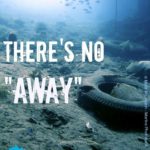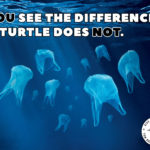Today is World Oceans Day. I wish this was a day for happy celebration, but unfortunately it’s not. It is clear that right now there are more pressing matters going on in the world, but besides acute global health problems – COVID19 – and long overdue social changes – Black Lives Matter -, we can’t forget to think longterm. Our oceans are sick and dying. Reading this, your senses might be numb to the gravity of the situation. Sensationalism and countless of doomsday scenarios in our media are to blame. But let me repeat: Our oceans are sick and dying. FACT.
FACT 1: Since 1985, more than 50% of the world’s coral reefs have died. Not just damaged or sick, but dead. Why should you care? Coral reefs have the highest biodiversity of any habitat on the planet, even more than rain forests. They occupy less than 1% of the ocean floor, but are home to more than 25% of marine life. Coral reefs provide food, medicine, revenue from tourism and they protect coastlines from storms. Moreover, let’s forget what we as a species can gain from them and just consider the loss the disappearance of coral reefs would mean to the world. Do you want to live in a world where your kids will only be able to see coral reefs in pictures and video? The dying off of coral reefs has several reason, the main ones being:
-
- Coral bleaching, which occurs when water temperatures get too high. Yes, global warming is real. Coral bleaching has damaged over 70% in a mass bleaching event that took place from 2014-2017.

-
- Ocean acidification. Same culprit: Global Warming. The higher amount of CO2 in the atmosphere results in more CO2 being absorbed into the oceans, which means a drop in pH. In other words, the oceans become more acid. This disturbs the chemistry of a coral reef, since corals have a skeleton made of calcium carbonate. Imagine a statue slowly dissolving because of acid rain and you get the picture.

-
- Nitrogen Pollution: Sewage and runoff from excessive use of fertilisers in farming, cause a rise in nitrogen and phosphorus in our oceans. These are necessary nutrients and also occur naturally, but in too big quantities they make coral more susceptible to bleaching and stimulate the growth of algae, which will literally smother and kill entire reefs.

FACT 2: In 1950 the entire planet produced 1.5 million tons of plastic per year. Last year in 2019, we produced 380 million tons. That’s a 25000% increase and we’re not slowing down. A few numbers:
-
- Plastic was found in the stomachs 100% of sea turtles, 60% of whales and 40% of seabirds examined. In 2019 a beached whale in Scotland had 100kg of debris in its stomach, not leaving any space for food.

-
- By 2050, in 30 years time, there will be more plastic than fish in the oceans in terms of weight. If 30 years seems like a long time, 30 years ago in 1990 Sinéad O’Conner released the hit “Nothing Compares 2U”. Suddenly 30 years don’t seem that long.

-
- Ocean currents tend to collect plastic debris in giant garbage patches. The biggest one, the Great Pacific Garbage Patch is more than 2x as big as France and contains 1.3 trillion pieces of plastic. That’s 200 pieces of plastic for every person in the world.
FACT 3: 29% of the world’s fish stocks are overfished. Meaning those fish will be extinct if we keep doing what we do.
-
- Over 100 million sharks are killed by humans per year. That’s 11.500 sharks per hour. While reading this sentence we have killed about 15 sharks. Sharks kill 1 per person per year on average. Cows? They kill 20 people per year. What about our best friends? Dogs kill 28 people per year. Sharks are killed for their fins (shark fin soup, superstitious medicine), meat and often end up in your home as frozen fish fingers, mixed in your pet’s food or in some of your cosmetics. Luckily fish lay millions of eggs and have tons of offspring you say? Not the shark. Sharks have very small litters, may have pups only once every 2 years and have longer pregnancies than humans, which all result in sharks being very susceptible to overfishing. Most of the sharks species you can name are critically endangered, endangered of vulnerable.

-
- In 1989 we caught about 90 million tons of fish, and since then this number has been stagnating or even dropping. Sounds good right? Not really. There’s just not enough fish left. We’ve tapped so far into the ocean’s resources that the oceans are emptying at an alarming rate. We have hit our high-water mark over 30 years ago. When one species runs out (remember the Atlantic Cod in 1993), we switch to another species until that one is pretty much extinct and will keep going until the last fish has been fished out of the ocean and we’ll realise that money – or plastic – can’t be eaten.

Let’s also not forget oil spills, boat traffic killing thousands of marine mammals and turtles every year, dolphins and orcas locked up in theme parks, coast line development and many many other issues.
So there you have it. Happy Oceans Day!
Luckily we are human, and when Pandora opened her box a long time ago, we were left with Hope. The past few months we have seen how flexible, how committed to a common goal and how united we can be as a species when confronted with an urgent matter. Let’s not forget this feeling when things are back to normal, but let’s instead remember the power we have to make a change in our daily lives and in the world. Our planet may be called planet earth, but we all know she should’ve been called planet Ocean. Spread the word, take action and lets have a really happy Oceans Day next year in 2021.

Take action:
What was this article worth to you?
![]()








